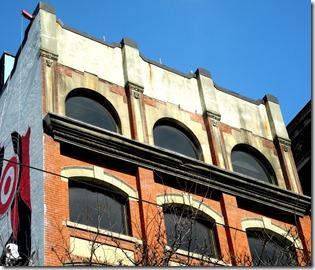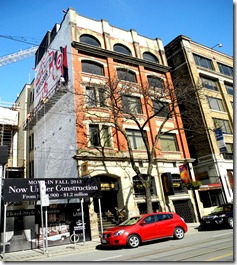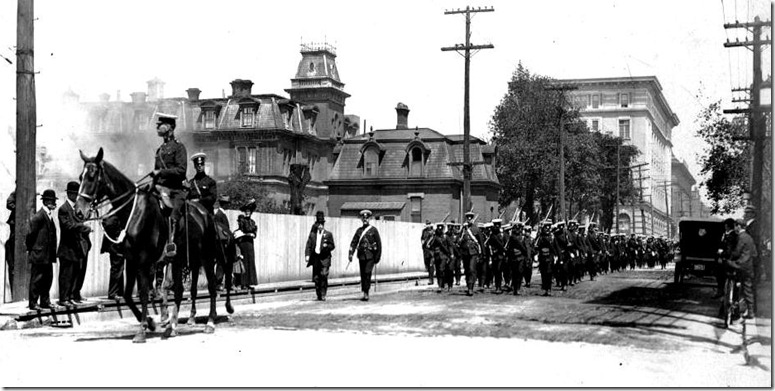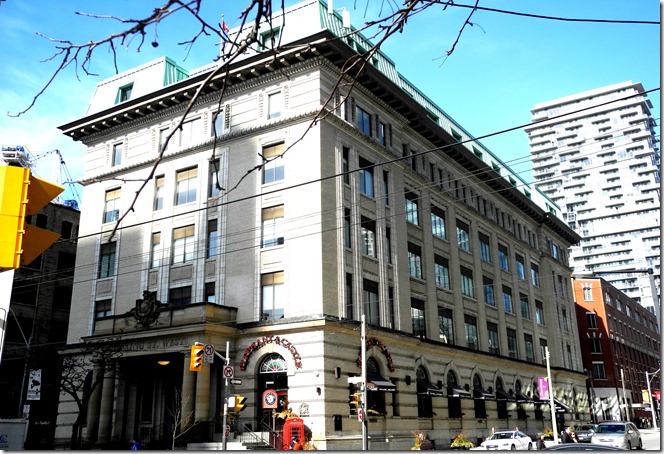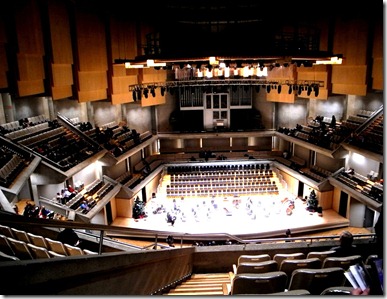Toronto’s famous Roy Thomson Hall
The site of today’s Roy Thomson Hall is one of the most historic locations in Toronto. During the 19th century, it was where “Government House” once stood. The term “Government House” was employed throughout the multitudinous colonies of the British Empire to denote the official vice-regal residence of the representatives of the Crown. In Toronto (York), since the town’s inception, it has had several such residences. One of them was located on the southwest corner of King and Simcoe Streets, where the Roy Thomson Hall is now located. Viewing the site today, it is difficult to imagine that it was where the Lieutenant-Governors of the province once entertained royalty.
The above sketch is Elmsley House, built in 1798, located on the southwest corner of King and Simcoe Streets. At that time, it was on a small rise of land in the woods, to the west of the settled area of York, the town being clustered around the eastern end of the harbour. The house was the private residence of Chief Justice John Elmsley, speaker of the House of Assembly and brother of the famous classical editor and critic, Peter Elmsley of Oxford University.
In 1815, the structure was purchased by the Government of Upper Canada to serve as the official residence of the Lieutenant Governor. Though it was officially named “Government House,” the residents of York continued to refer to it as Elmsley House. During the years it was the vice-regal residence, Governors Sir Francis Gore, Sir Peregrine Maitland, Sir John Colbourne, Sir Francis Bondhead, and Sir George Arthur entertained the elite of the city and visiting dignitaries within its walls. During the 1840s, a yearly agricultural fair was held on the grounds at Government House. Citizens from Toronto eagerly attended, as well as people from the surrounding towns and farms, who arrived by steamship, stage coach and wagons to participate in the popular annual event. From 1849 to 1851, Governor-in-Chief Lord Elgin lived in the mansion.
The original Elmsley House was enlarged in during the years it served as the vice-regal residence. The above sketch, from the collection of the Toronto Reference Library, depicts the citizens of Toronto celebrating Queen Victoria’s birthday at the house in 1854. Perhaps the most famous guest at the house was Edward, Prince of Wales, who later became King Edward VII. He visited Toronto in 1860. It was the first time an heir to the throne had ever set foot in the city. On his occasion, he officially opened and named Queen’s Park, where in the years ahead the Legislative Buildings of Ontario were constructed. He also laid the cornerstone in Queen’s Park for a future statue of his mother. The statue was eventually erected and remains today in front of the Ontario Legislative Buildings. In the library of Osgoode Hall, a grand ball was held for the prince. Today, tours of Osgoode Hall include a visit to this magnificent room. These tours are free to the public, but are conducted during the summer months only.
Unfortunately, the Government House that traced its origins to 1798 was destroyed by fire in 1862.
The Duke of Connaught, third son of Queen Victoria, at the monument to Queen Victoria in Queen’s Park c. 1910. His brother Edward, Prince of Wales, laid the cornerstone for the monument in 1860. I wonder why a man is crouched up on the statue. Life certainly does have its little mysteries.
The law library in Osgoode Hall where the grand ball was held for the future King Edward VII in 1860. This room can be visited on the tours of Osgoode Hall. During his visit he resided at Government House at King and Simcoe Streets.
The above illustration is a picture postcard from the collection of the Toronto Reference Library. It depicts the new residence that the government built to replace the one that was demolished by fire. It was completed in 1870, at a cost of $105,000, erected on the same site as its predecessor. The architects were Gundry and Langley. Henry Langley was a Toronto-born architect, who also designed the tower and spire on St. Michael’s Cathedral, the original Metropolitan United Church on King Street East, and Jarvis Street Baptist Church. When the new Government House was constructed, King Street was a fashionable residential address, where many of the elite of the city had their homes.
The three-story dwelling in the above engraving was constructed of red bricks and possessed Ohio cut-stone trim. It was in the Second Empire style, with a Mansard roof, numerous gables, and an impressive tower facing King Street. The vice-regal suite was on the second floor, in the central position, on the east side. The main reception hall in the house was 65’ by 21’, and it contained ornate plasterwork and extensive wood trim. On the north side (right-hand side of the picture) can be seen a shelter over the carriage entrance, which sheltered guests from inclement weather. Greenhouses and support buildings are located on the south side of the dwelling. The view in the postcard is of the east facade, facing Simcoe Street.
By the turn of the 20th century, the King Street area was becoming more industrial, as the land to the south of the house was increasingly encroached upon by the railways. Also, the Legislature had relocated in 1893 from its location on Front Street, east of Simcoe Street, to Queen’s Park. Before the relocation, Government House had been only several blocks to the northwest of the Legislative Buildings. The old Legislative Buildings remained vacant for almost a decade, until they were demolished between the years 1900 and 1903. The site is now occupied by the Canadian Broadcasting Centre.
In 1912, Government House and the surrounding lands were sold to the Canadian Pacific Railway, the stately house soon demolished for a freight yard. The last residents were Sir John and Lady Gibson of Hamilton. They moved temporarily into a house loaned by Mr. Walter Beardmore, at 33 St. George St. The house still exists today and is called Cumberland House. It is owned by the University of Toronto.
Finally, in 1915, the new vice-regal residence, Chorley Park, was ready for occupation. It remained the home of the Lieutenant Governors until 1937, when it too was demolished as the cost to maintain it became a political embarrassment . There is no longer a residence for the Lieutenant Governors of Ontario. They have offices and a suite within the Legislative Buildings at Queen’s Park.
View of Government House in 1907, showing the east facade and the extensive grounds and flower beds. The photo was taken in the spring of the year as tulips are in bloom on either side of the impressive carriageway.
Government House in 1908. This view shows the east facade facing Simcoe Street (left-hand side), which contains the formal front entrance and portico, and the north facade (right-hand side) with the protected carriage entrance and tower, which face King Street.
The last garden party held at Government House in 1911. This view looks west from Simcoe Street. The building in the upper left-hand corner of the picture is on King Street, and it remains in existence today. The above three pictures are from the collection of the City of Toronto Archives.
This 1912 photo from the Toronto Reference Library is a view of Government House from the southeast. Simcoe Street is between the residence and St. Andrew’s Presbyterian Church to the east. The extensive lawns of the property are visible. The building on the extreme left, containing arched windows, is on King Street West (see next photo).
The building that is visible in the 1912 photograph, as it appears on King Street today.
The 12th York Rangers marching south on Simcoe Street c.1912. Government House is visible to the north. The fencing around Government House suggests that the demolition of the house has already commenced, as the property had an ornate wrought-iron fence surrounding it when the vice-regal representatives were in residence. Gazing north up Simcoe Street, the Union Building at 212 King Street is visible. It is on the northwest corner of King and Simcoe Streets (see next photo). Today, the Union Building is where the subscription office of the TSO is located as well as the offices of the Argonaut Football Club.
The Union Building, constructed in 1908, on the northwest corner of King and Simcoe. It can be seen in the 1912 photo of the troops marching south on Simcoe Street. The Mansard roof above the cornice was not added until the 1980s.
The next time you walk by the Roy Thomson Hall or attend a concert in its auditorium, you will be on a site where important events occurred in Toronto’s past.
To view the Home Page for this blog: https://tayloronhistory.com/
To view other posts about the history of Toronto and its buildings:
St. Stanislaus Koska RC Church on Denison Avenue, north of Queen West
The Bishop’s (St, Michael’s) Palace on Church Street, Toronto
https://tayloronhistory.com/2013/03/02/torontos-architectural-gemsbishops-palace-on-church-street/
The Ed Mirvish (Pantages, Imperial, Canon) Theatre, a true architectural gem on Toronto’s Yonge Street
The Waverly Hotel on Spadina near College Street.
https://tayloronhistory.com/2013/02/16/toronto-architectural-gemsthe-waverly-hotel-484-spadina/
The Art Deco Bank of Commerce building on King Street West.
The Postal Delivery Building, now the Air Canada Centre (ACC)
The Bellevue Fire Station on College Street
https://tayloronhistory.com/2013/02/14/torontos-architectural-gems-bellevue-fire-station/
The Bank of Nova Scotia at King and Bay Streets
Toronto’s old Sunnyside Beach
https://tayloronhistory.com/2013/02/01/a-pictorial-journey-to-sunnyside-beach-of-old-part-one/
https://tayloronhistory.com/2013/02/03/a-pictorial-journey-to-torontos-old-sunnyside-beach-part-two/
Toronto’s architectural gems—the Runnymede Library
https://tayloronhistory.com/2013/02/05/torontos-architectural-gems-runnymede-library/
Spadina Avenue – sinful, spicy and diverse
https://tayloronhistory.com/2012/09/28/sinfully-saucy-and-diversetorontos-spadina-avenue/
The Reading Building, a warehouse loft on Spadina Avenue
https://tayloronhistory.com/2013/01/20/torontos-architectural-gemsthe-reading-building-on-spadina/
The Darling Building on Spadina Avenue
https://tayloronhistory.com/2013/01/19/torontos-architectural-gemsthe-darling-building-on-spadina/
The amazing Fashion Building on Spadina Avenue
Toronto’s architectural gems – the Tower Building at Spadina and Adelaide Street
The Balfour Building at 119 Spadina Avenue
The Robertson Building at 215 Spadina that houses the Dark Horse Espresso Bar
An architectural gem – Grossman’s Tavern at Spadina and Cecil Streets
https://tayloronhistory.com/2012/11/08/architectural-gem-grossmans-tavern-at-377-9-spadina/Historic
History of the house that contains the Paul Magder Fur Shop at 202 Spadina
An important historic building that disappeared from the northeast corner of Spadina and College
Historic bank building on northeast corner of Spadina and Queen West
https://tayloronhistory.com/2012/12/02/torontos-architectural-gemsbank-at-spadina-and-queen-west/
History of the Backpackers’ Hotel at King and Spadina
https://tayloronhistory.com/2012/03/31/history-of-the-backpackers-hotel-at-king-and-spadina/
Hamburger corner – Spadina and Queen Streets
https://tayloronhistory.com/2012/10/10/torontos-hamburger-cornerwhere-is-it-and-why/
Lord Lansdowne Public School on Spadina Crescent
The Victory Burlesque Theatre at Dundas and Spadina
https://tayloronhistory.com/2012/09/08/the-sinful-victory-burlesque-theatre-at-dundas-and-spadina/
The Dragon City Mall on the southwest corner of Dundas and Spadina
https://tayloronhistory.com/2012/08/25/torontos-heritage-the-southwest-corner-of-queen-and-spadina/
Buildings on the west side of Spadina a short distance north of Queen Street.
History of the site of the Mcdonalds on northwest corner of Queen and Spadina
https://tayloronhistory.com/2012/08/27/mcdonalds-at-queen-and-spadina-on-an-historic-site/
A former mansion at 235 Spadina that is now almost hidden from view.
ttps://tayloronhistory.wordpress.com/2012/07/04/torontos-architectural-gems-is-this-one-a-joke/
Military hero of the War of 1812 lived near corner of Spadina and Queen West.
To view other posts about Toronto’s past and its historic buildings:
The Art Deco bus terminal at Bay and Dundas Streets.
Photos of the surroundings of the CN Tower and and the St. Lawrence Market in 1977
The old Dominion Bank Building at King and Yonge Street
The Canada Life Building on University and Queen Street West.
Campbell House at the corner of Queen Street West and University Avenue
A study of Osgoode Hall
https://tayloronhistory.com/2012/04/12/enjoying-torontos-architectural-gems-osgoode-hall/
Toronto’s first City Hall, now a part of the St. Lawrence Market
Toronto’s Draper Street, a time-tunnel into the 19th century
The Black Bull Tavern at Queen and Soho Streets, established in 1822
History of the 1867 fence around Osgoode Hall on Queen Street West at York Street
Gathering around the radio as a child in the 1940s
The opening of the University Theatre on Bloor Street, west of Bay St.
https://tayloronhistory.com/2012/02/24/the-opening-of-torontos-university-theatre-on-bloor-street/
122 persons perish in the Noronic Disaster on Toronto’s waterfront in 1949
Historic Victoria Memorial Square where Toronto’s first cemetery was located, now hidden amid the Entertainment District
https://tayloronhistory.com/2012/01/09/victoria-square-in-torontos-entertainment-district-is-a-gem/
Visiting one of Toronto’s best preserved 19th-century streets-Willcocks Avenue
The 1930s Water Maintenance Building on Brant Street, north of St. Andrew’s Park
Toronto’s architectural gems-photos of the Old City from a book published by the city in 1912
Toronto’s architectural gems in 1912
https://tayloronhistory.com/2012/12/04/torontos-architectural-gems-in-1912/
Toronto’s architectural gems – the bank on the northeast corner of Queen West and Spadina
https://tayloronhistory.com/2012/12/02/torontos-architectural-gemsbank-at-spadina-and-queen-west/
Photos of the surroundings of the CN Tower and and the St. Lawrence Market in 1977
The St. Lawrence Hall on King Street
https://tayloronhistory.com/2012/04/28/enjoying-torontos-architectural-gems-the-st-lawrence-hall/
Toronto’s streetcars through the past decades
https://tayloronhistory.com/2012/03/26/memories-of-torontos-streetcars-of-yesteryear/
History of Trinity Bellwoods Park
https://tayloronhistory.com/2012/04/09/the-history-and-beauty-of-trinity-bellwood-park/
A history of Toronto’s famous ferry boats to the Toronto Islands
Toronto’s Old City Hall at Bay and Queen Streets
https://tayloronhistory.com/2012/04/22/enjoying-torontos-architectural-gems-old-city-hall/
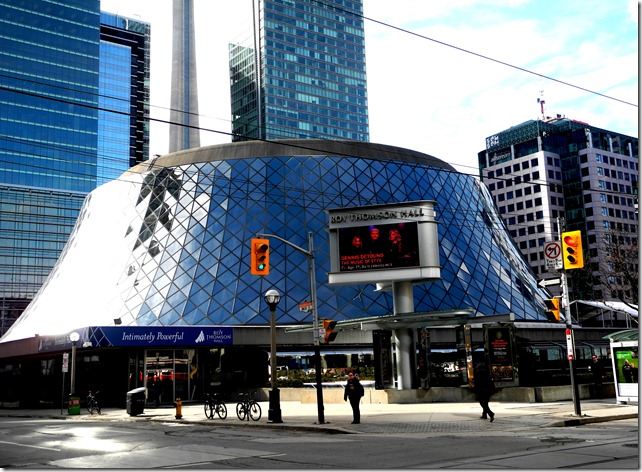
![pictures-r-1749[1] 1815-60 Tor. Ref. Lib. pictures-r-1749[1] 1815-60 Tor. Ref. Lib.](https://tayloronhistory.com/wp-content/uploads/2013/03/pictures-r-17491-1815-60-tor-ref-lib-_thumb.jpg)
![First_Government_House_in_Toronto_1854[1] Tor. Ref. First_Government_House_in_Toronto_1854[1] Tor. Ref.](https://tayloronhistory.com/wp-content/uploads/2013/03/first_government_house_in_toronto_18541-tor-ref-_thumb.jpg)
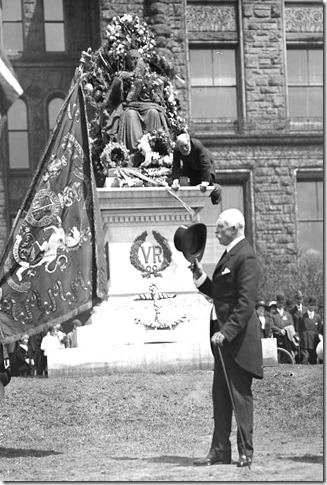

![pcr-2215[1] Tor. Ref. Lib. pcr-2215[1] Tor. Ref. Lib.](https://tayloronhistory.com/wp-content/uploads/2013/03/pcr-22151-tor-ref-lib-_thumb.jpg)

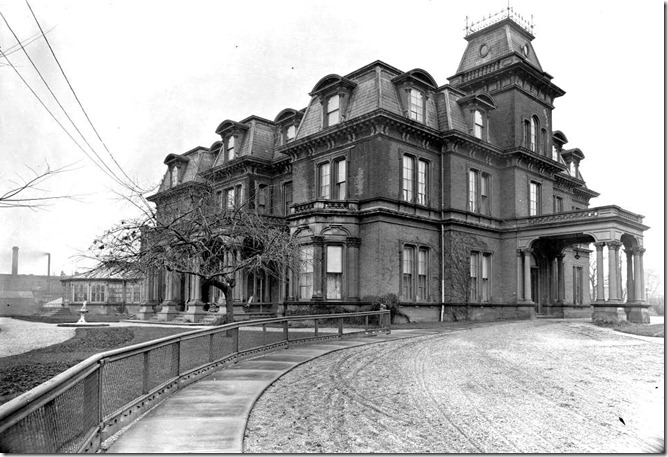
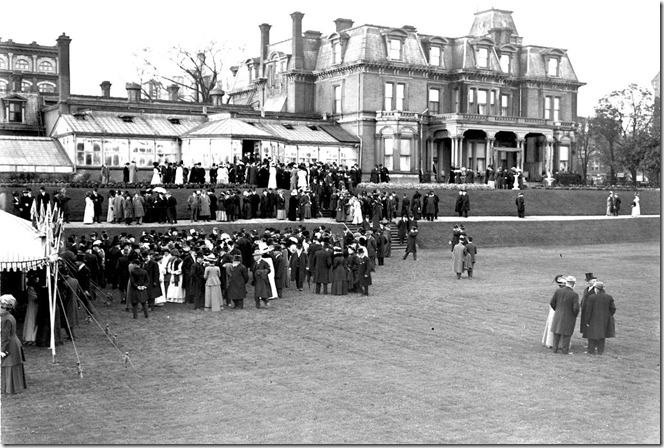
![pictures-r-1793[1] 1912, Tor. Ref. Lib. pictures-r-1793[1] 1912, Tor. Ref. Lib.](https://tayloronhistory.com/wp-content/uploads/2013/03/pictures-r-17931-1912-tor-ref-lib-_thumb.jpg)
